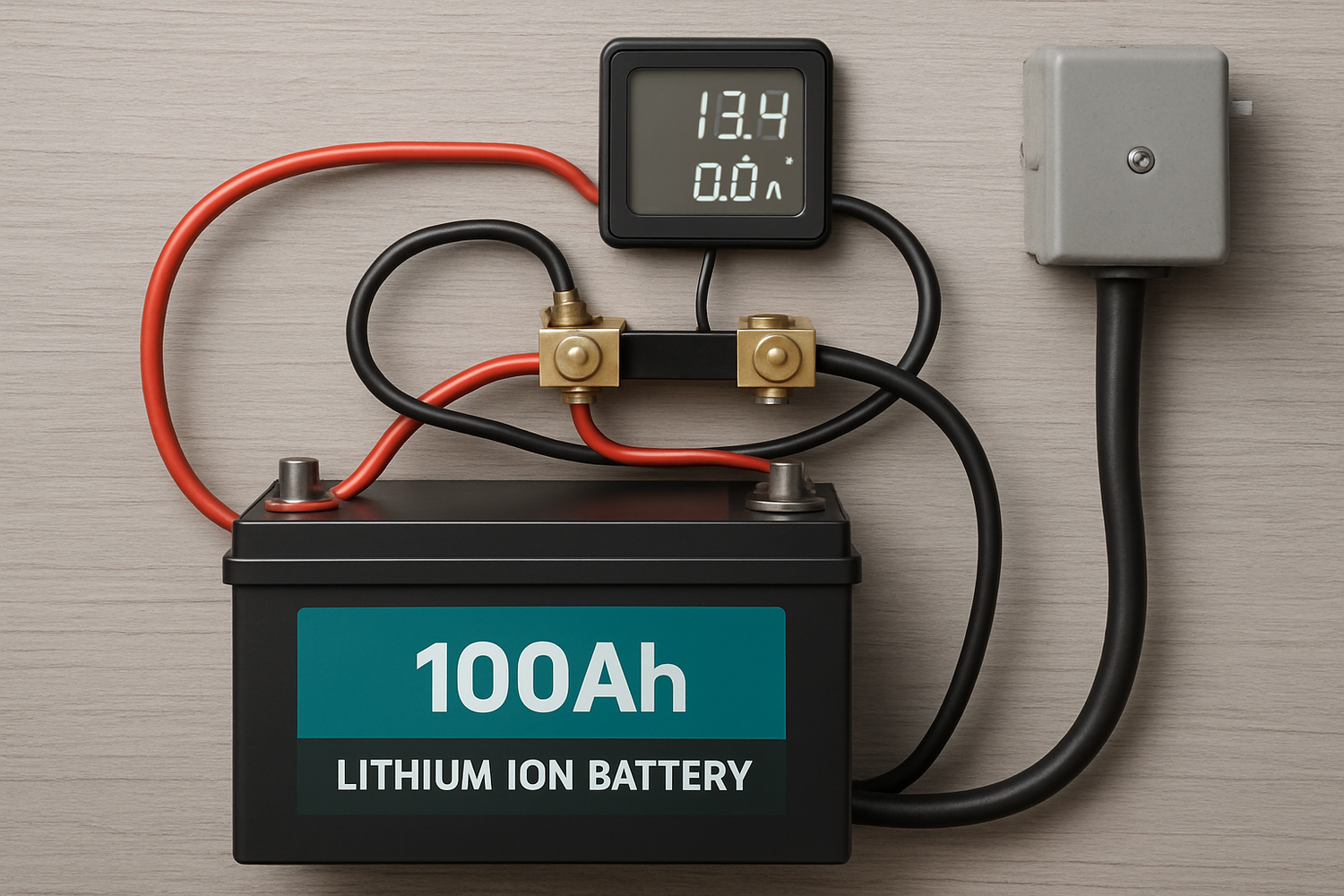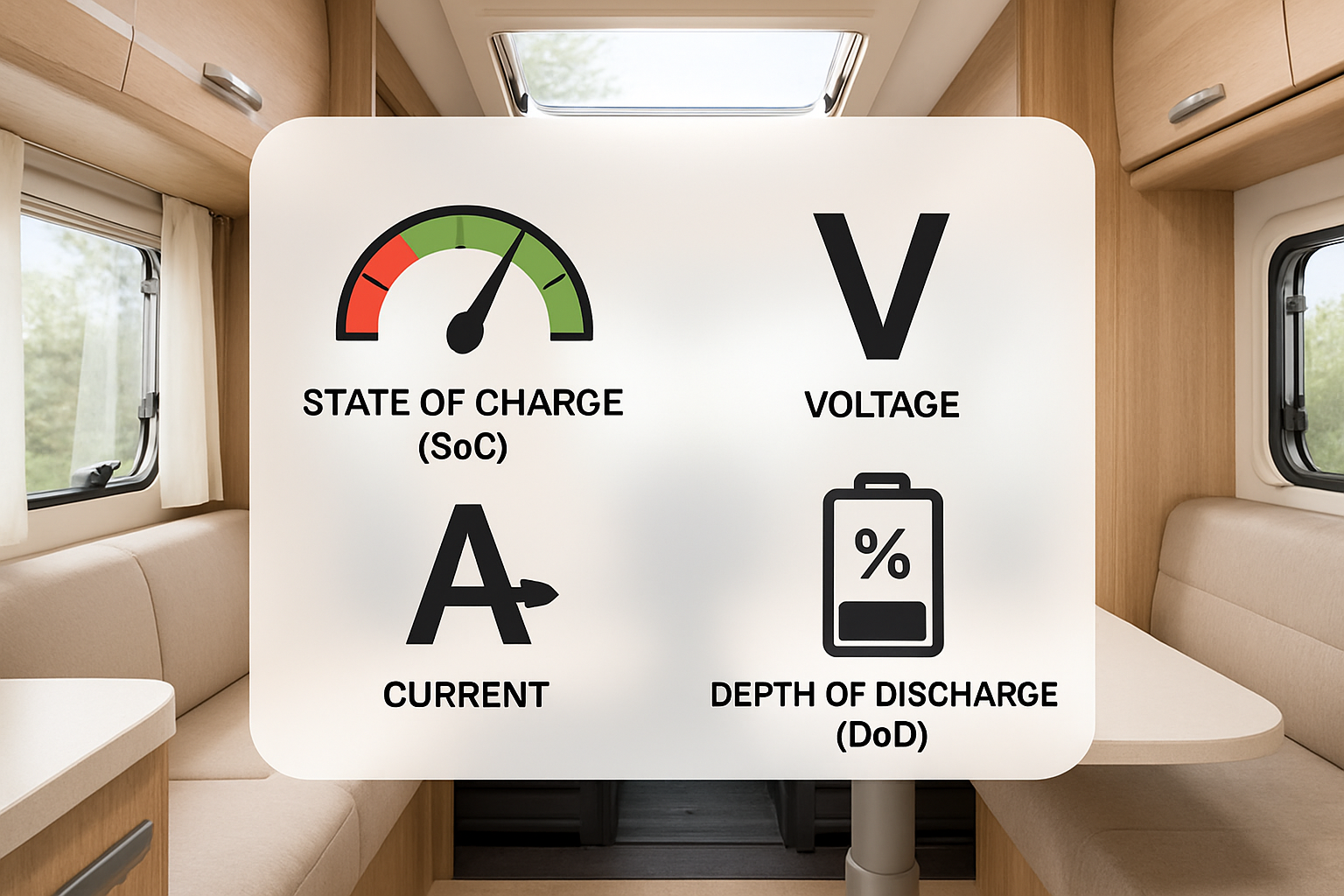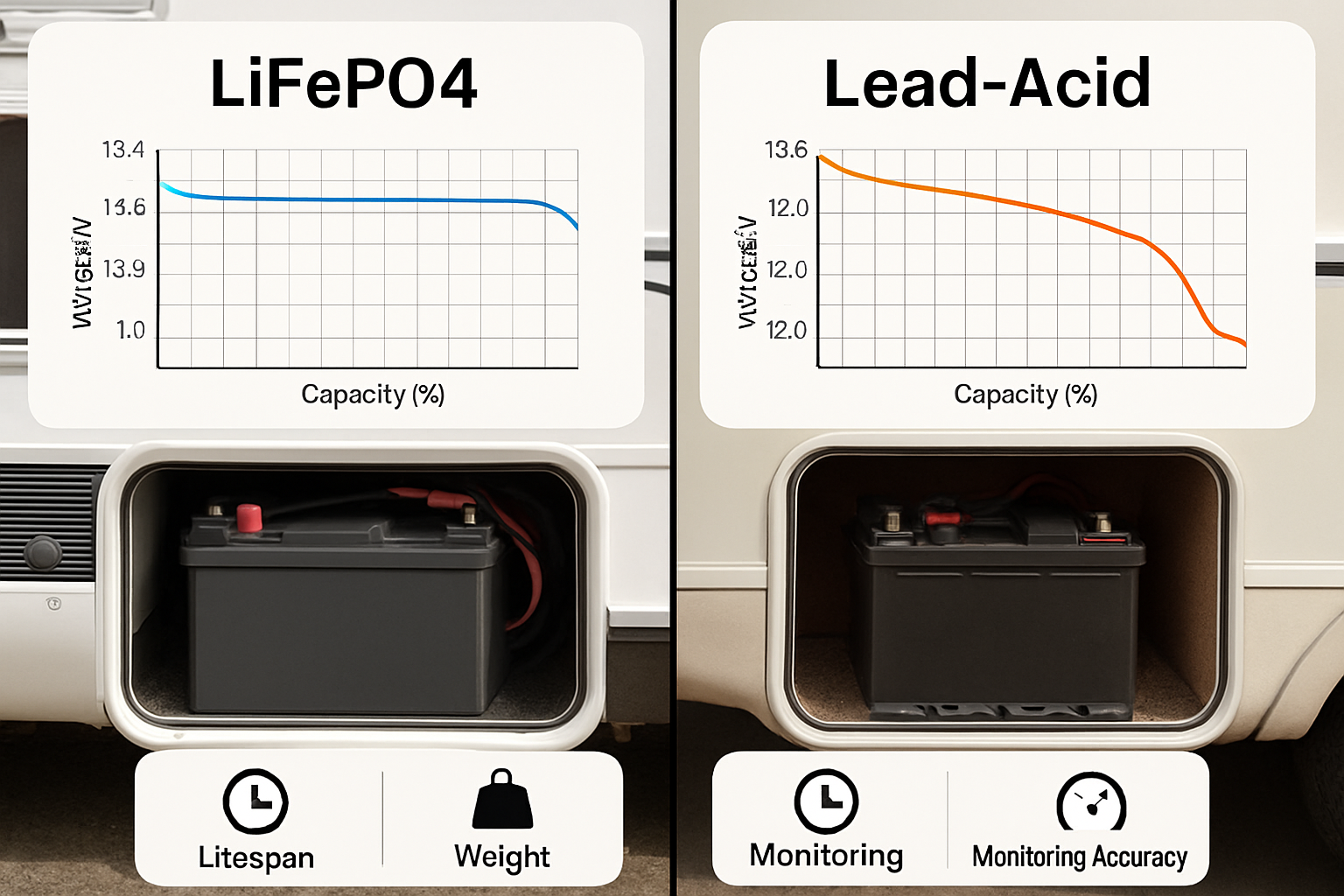You're off-grid, enjoying the peace of your remote campsite. You glance at your RV battery monitor, and it confidently displays 90% charge. A few hours later, after minimal use, it suddenly plummets to 20%, or worse, your power cuts out completely. This frustrating experience leads to a nagging question: is your monitor lying? The short answer is no, but it might be deeply confused. This confusion stems from the unique characteristics of the 100ah lithium ion battery that powers your adventures.
Unlike traditional lead-acid batteries, lithium iron phosphate (LiFePO4) batteries, the most common type used in RVs, have a very different way of showing their charge level. Understanding this difference is the key to achieving accurate RV energy monitoring and gaining true confidence in your power system. As clean energy solutions become more integrated into mobile applications, having a reliable grasp on your power storage is essential. According to the International Energy Agency, the demand for technologies like advanced lithium-ion batteries is rapidly increasing, making energy literacy more important than ever.
The Challenge of the Flat Voltage Curve
The primary reason your battery monitor might seem inaccurate is due to the discharge curve of your lithium battery. This concept is central to understanding your battery's behavior and your monitor's limitations.
What Is a Voltage Curve?
Think of a battery's voltage like the water pressure in a tank. With an old lead-acid battery, the 'pressure' (voltage) drops in a steady, predictable line as you use power. A monitor can easily look at the voltage—say, 12.1V—and correctly estimate that the battery is about 50% full. It's a straightforward relationship. However, a 100ah lithium ion battery behaves differently. Its voltage curve is remarkably flat. This means it maintains a nearly constant voltage from the moment it's fully charged until it's almost completely empty. It will hold a steady voltage for most of the discharge cycle, then drop off very sharply at the end.
The Consequence for Your RV Monitor
If your RV came with a basic, voltage-based monitor, it's designed for lead-acid batteries. When connected to a lithium battery, it sees the high, flat voltage and assumes the battery is at or near 100% charge for a very long time. It has no way of knowing the true state of charge until the voltage suddenly collapses, giving you no warning. This isn't a lie, but rather a misinterpretation of the available data. It's using an old map for a new territory.
Moving Beyond Voltage: How a Shunt Works
To get a truthful reading of your 100ah lithium ion battery's health, you need a tool that measures energy differently. This is where a shunt-based battery monitor becomes essential for precise RV energy monitoring.
Measuring the Flow of Energy
A shunt is a device that acts like a smart meter for your battery bank. It's installed on the main negative cable coming from your battery. Every amp of energy that flows out of your battery to power your lights and appliances, and every amp that flows in from your solar panels or shore power, must pass through this shunt. The shunt precisely measures this flow of current in real-time.
Calculating the True State of Charge (SoC)
A shunt-based monitor uses this current measurement to perform a simple calculation. It knows the total capacity of your battery (e.g., 100 amp-hours). As you use power, it subtracts the amp-hours being drawn from the total. When you charge, it adds the amp-hours back. This method, known as coulomb counting, provides a highly accurate State of Charge (SoC) percentage that is independent of the battery's voltage. This accuracy is vital for understanding your system's capabilities, a key aspect of evaluating solar storage performance.
Fine-Tuning for Precision RV Energy Monitoring
Simply installing a shunt-based monitor is not enough. To ensure its readings are trustworthy, you must configure it correctly and perform periodic maintenance. Inaccurate readings are a common issue that can often be traced back to setup.
Setting the Correct Battery Parameters
Your monitor is smart, but it's not psychic. You need to tell it exactly what it's monitoring. In the monitor's settings, you must input several key values:
- Battery Capacity: Set this to the rated capacity of your battery, such as 100Ah.
- Charged Voltage: This tells the monitor at what voltage to consider the battery 100% full (typically around 14.2V-14.6V for LiFePO4 while charging).
- Charge Efficiency: Lithium batteries are highly efficient, but not perfect. A setting of 98-99% is common. Research from organizations like IRENA highlights the high efficiency of lithium-ion technology in renewable energy systems.
The Importance of Synchronization
Over time, small inaccuracies can accumulate. To correct this, you need to periodically synchronize the monitor. This process resets its internal counter to a known state. To do this, fully charge your 100ah lithium ion battery until the charger enters its 'float' stage, meaning the current flowing into the battery drops to near zero. At this point, you manually set the monitor's SoC to 100%. This ensures that your monitor's starting point is perfectly accurate, eliminating any accumulated drift.
Common Pitfalls in RV Battery Monitoring
Even with a quality shunt and proper calibration, certain factors can still lead to discrepancies. Being aware of these potential issues is crucial for maintaining battery monitor accuracy.
Incorrect Installation and Wiring
One of the most common errors is incorrect wiring. For the shunt to work, *every single* electrical load and charge source must be connected on the 'system' side of the shunt, not directly to the battery's negative terminal. If even a single wire bypasses the shunt, the monitor won't account for that energy flow, leading to an inaccurate SoC reading over time.
Battery Health and Aging
Your 100ah lithium ion battery will not have a 100Ah capacity forever. Over hundreds of cycles, its total usable capacity will slowly decrease. If your monitor is still configured for 100Ah, but your battery can only hold 95Ah, the readings will naturally be off. Advanced monitors may have settings to adjust for this, but it's an important factor to consider for long-term lithium ion battery health.
Achieving Confidence in Your Power System
Your RV battery monitor isn't trying to deceive you. When it provides confusing readings, it's usually a sign of a technological mismatch or a configuration error. The flat voltage curve of a 100ah lithium ion battery makes simple voltage-based monitors obsolete for accurate tracking.
By upgrading to a shunt-based battery monitor, configuring it with the correct parameters, and ensuring all wiring is routed correctly, you can get a true and reliable picture of your available power. This accuracy empowers you to manage your energy consumption effectively, protect your battery investment, and enjoy your travels with the confidence that you truly know how much power you have left.
Frequently Asked Questions
How often should I synchronize my RV battery monitor?
It is good practice to perform a full charge and synchronization every few weeks of regular use. You should also do it after any particularly deep discharge cycle or if you notice the readings starting to seem slightly off. This will reset any small errors and maintain the highest level of accuracy.
Can I use a simple voltmeter to check my 100ah lithium ion battery's charge?
A voltmeter is not a reliable tool for determining the state of charge for a LiFePO4 battery because its voltage remains very stable throughout the discharge cycle. It can confirm the battery is on and providing power, but it cannot tell you if it is 90% full or 20% full.
My monitor shows 100%, but my solar charger is still sending power. Why?
This is normal and part of the final stages of charging. Once the battery reaches 100%, the charger will switch to a lower current 'float' or 'absorption' phase. This is a maintenance charge designed to keep the battery topped off and to allow the internal Battery Management System (BMS) to balance the individual cells. The current will typically be very low, and your monitor is correct in reporting a full charge.





Leave a comment
All comments are moderated before being published.
This site is protected by hCaptcha and the hCaptcha Privacy Policy and Terms of Service apply.